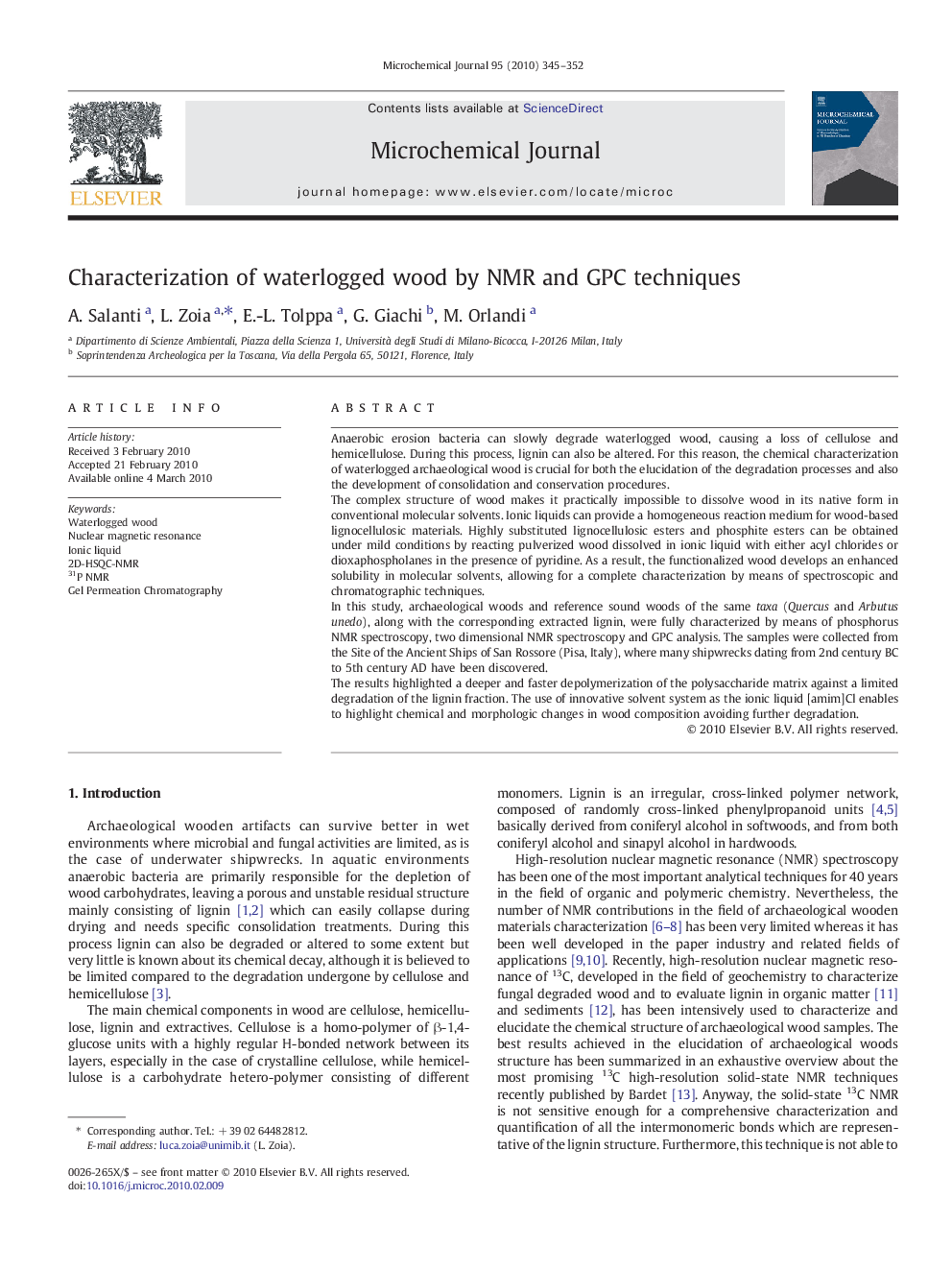| Article ID | Journal | Published Year | Pages | File Type |
|---|---|---|---|---|
| 1227993 | Microchemical Journal | 2010 | 8 Pages |
Anaerobic erosion bacteria can slowly degrade waterlogged wood, causing a loss of cellulose and hemicellulose. During this process, lignin can also be altered. For this reason, the chemical characterization of waterlogged archaeological wood is crucial for both the elucidation of the degradation processes and also the development of consolidation and conservation procedures.The complex structure of wood makes it practically impossible to dissolve wood in its native form in conventional molecular solvents. Ionic liquids can provide a homogeneous reaction medium for wood-based lignocellulosic materials. Highly substituted lignocellulosic esters and phosphite esters can be obtained under mild conditions by reacting pulverized wood dissolved in ionic liquid with either acyl chlorides or dioxaphospholanes in the presence of pyridine. As a result, the functionalized wood develops an enhanced solubility in molecular solvents, allowing for a complete characterization by means of spectroscopic and chromatographic techniques.In this study, archaeological woods and reference sound woods of the same taxa (Quercus and Arbutus unedo), along with the corresponding extracted lignin, were fully characterized by means of phosphorus NMR spectroscopy, two dimensional NMR spectroscopy and GPC analysis. The samples were collected from the Site of the Ancient Ships of San Rossore (Pisa, Italy), where many shipwrecks dating from 2nd century BC to 5th century AD have been discovered.The results highlighted a deeper and faster depolymerization of the polysaccharide matrix against a limited degradation of the lignin fraction. The use of innovative solvent system as the ionic liquid [amim]Cl enables to highlight chemical and morphologic changes in wood composition avoiding further degradation.
